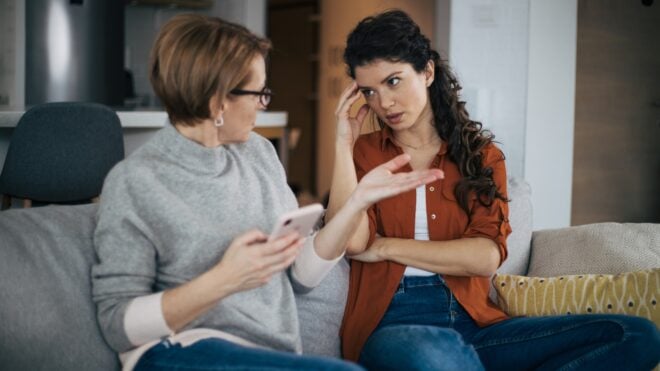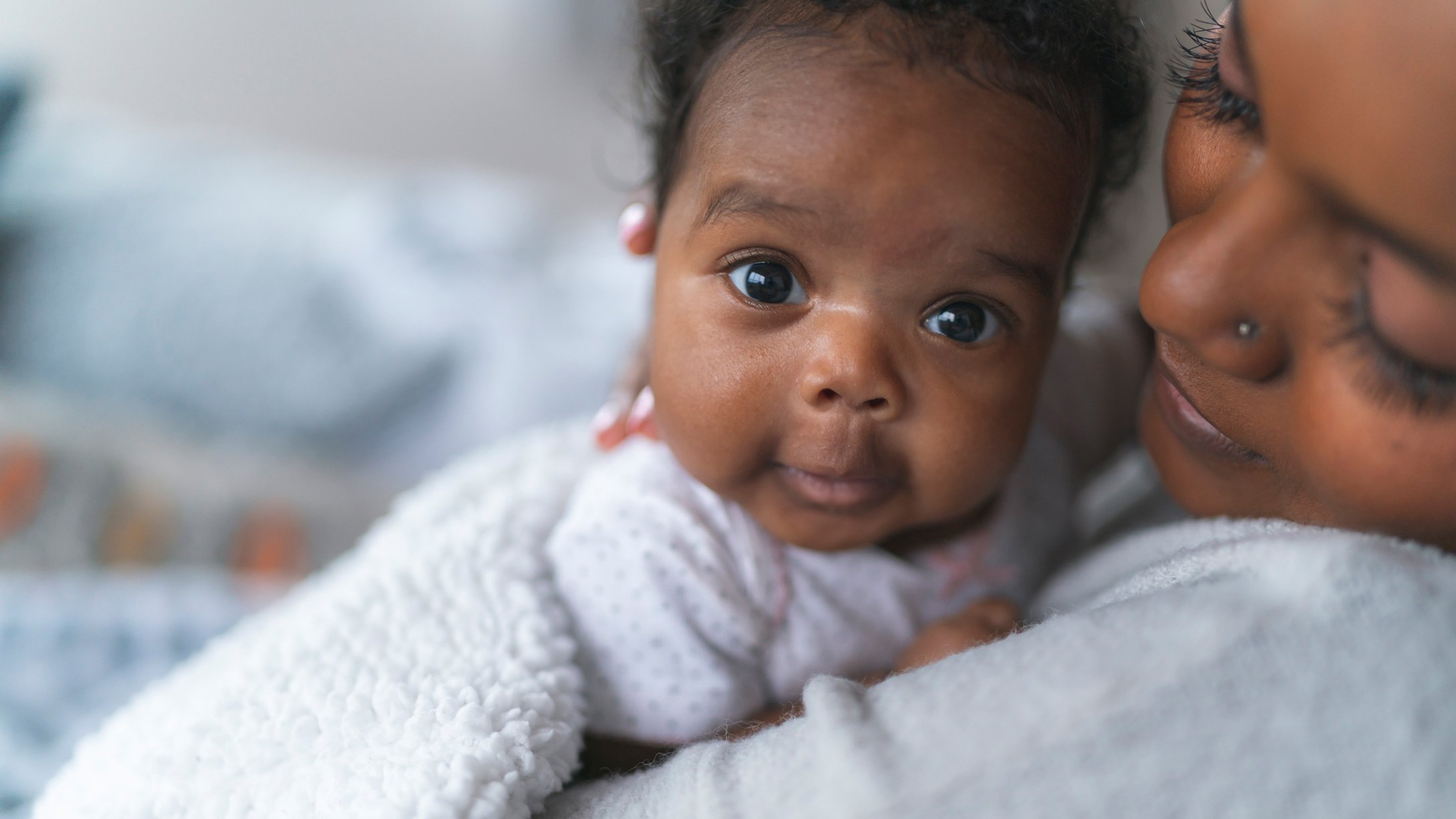
In this article:
When your baby is born, their vision isn’t quite developed. In fact, it will likely be 20/400 which means they can see at 20 feet what a person’s normal vision ability is for 400 feet. Their nearsightedness will quickly fade as they not only develop the physical ability to see closer to 20/20 but also start to understand the visual cues from the world around them.
“Infants don’t have much idea of what they’re seeing and don’t have much context to understand the visual information they receive,” Dr. Benjamin Ticho of Ticho Eye Associates told Mom.com.
This is normal as it is a whole new world for your baby and it will take time to associate even something as familiar as you with your face.
Baby vision development week-by-week
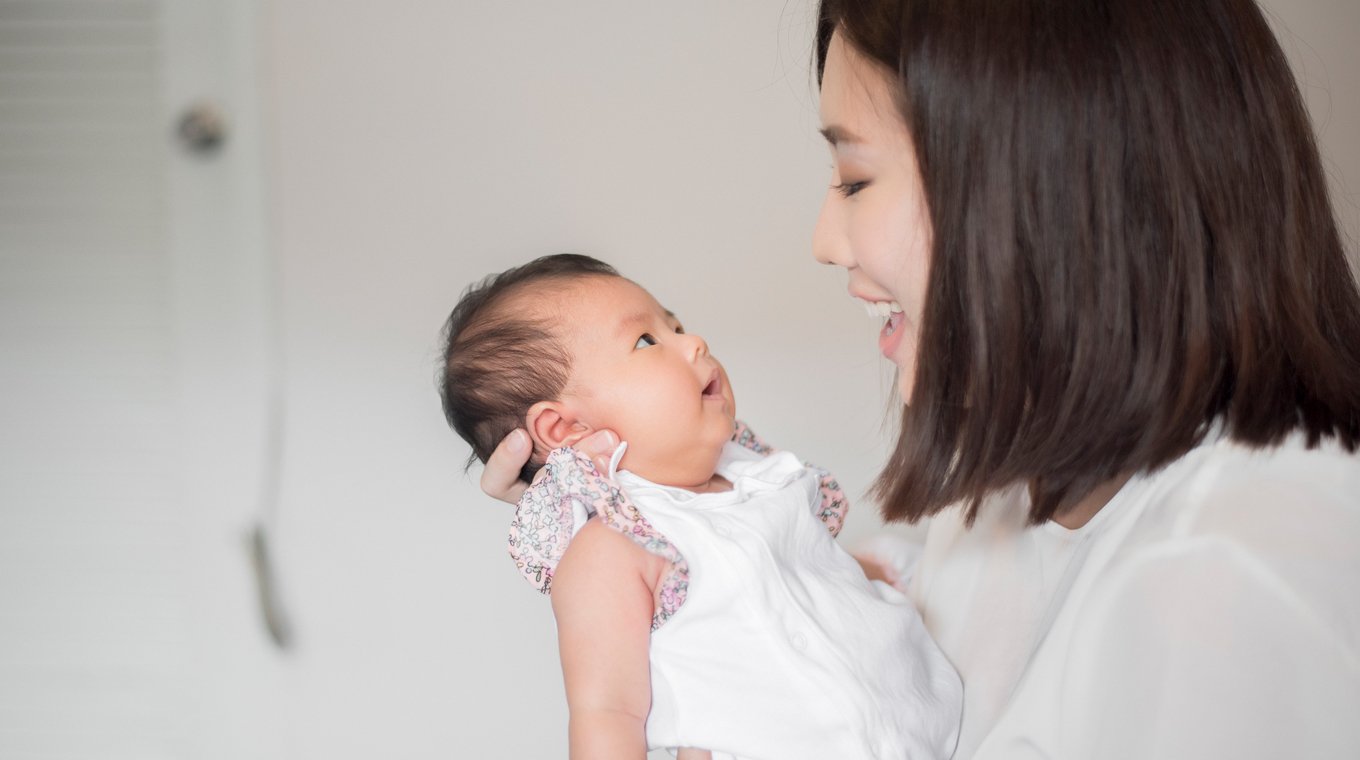
The first month of sight is constantly changing. In week one, your baby can only see things that are approximately eight to twelve inches in front of them and will only hold a gaze for a few seconds. Everything is black and white with some shades of gray helping define things.
By the end of week two, your baby may start to recognize the faces of their closest and frequent caregivers. Your baby is still not ready to stare for long periods of time and will move their gaze around frequently.
It’s in week three that your baby’s gaze will get longer and their attention span starts to study things around them. They can still only see up to 12 inches in front of their face but will gaze for up to 10 seconds.
By the end of week four, your baby will start to track objects with their eyes. You will see them move their head back and forth since their eyes are still a month or two away from being able to move independently.
What a baby sees: Creating a visually stimulating environment
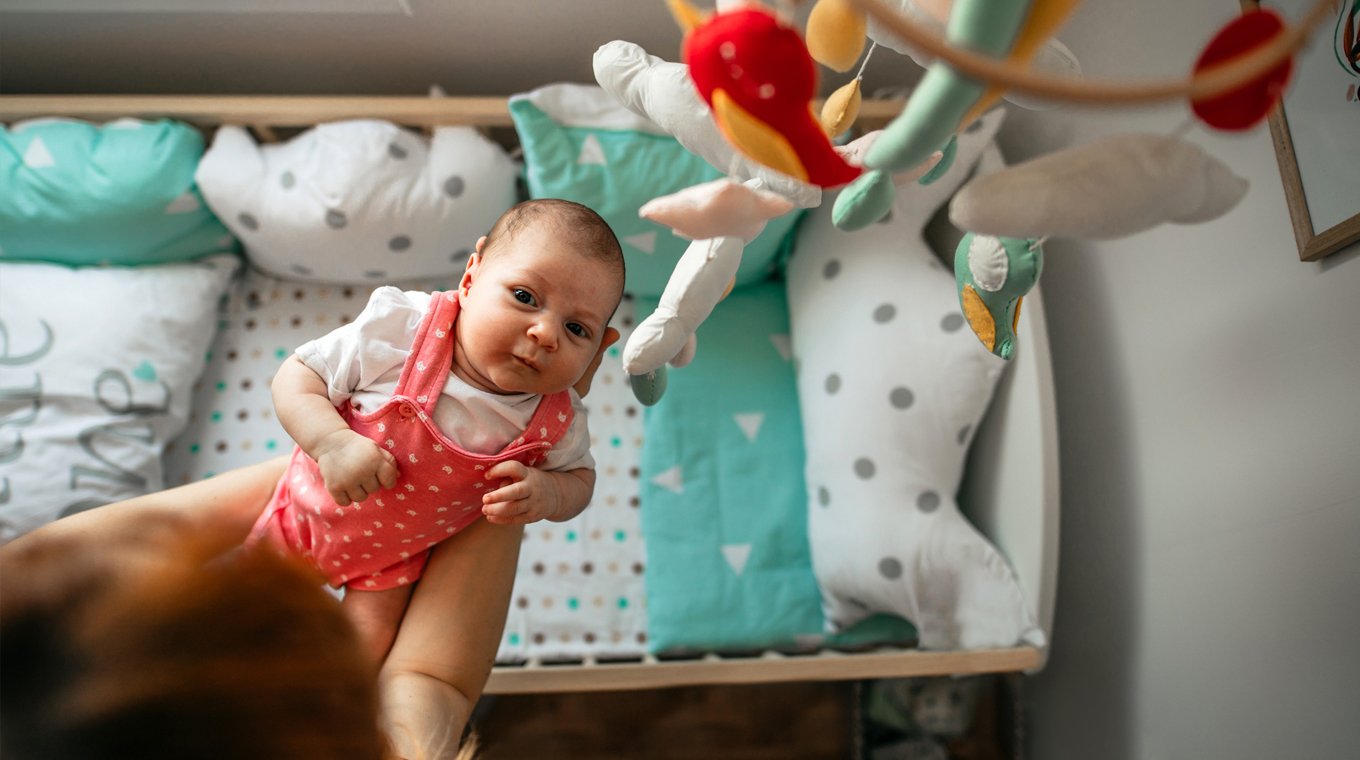
Because your baby doesn’t have the ability yet to see very far nor can they see colors, it’s best to create an environment that can enahnce their eye coordination. Paint their room in bright colors that can be recognized by contrast in a grayscale. Light pastels are not visually stimulating for your child because they can’t distinguish the hues. Use strong primary colors such as red, yellow, and blue. Orange is another strong color babies can see in contrast. These will help stimulate your baby’s vision and give him something they can see and focus on.
Mom of three Anita LaPointe wanted to make her babies’ rooms as conducive to development as possible. “I looked around until I found a mobile for my kids’ room that had dark, bold colors and very noticeable shapes,” she told Mom.com. “I figured the mobile was the closest thing for him to stare at in the early months and I wanted it to be more than cute.”
Helping vision development
There are things that you can do to help stimulate visual development. If you’ve decorated the room using bold colors, you’ve already started tthe process. Make sure toys are primary colors (or black and white) and use bold geometric patterns when possible.
Make sure to help your baby not only see better, but also start to relate the information of what they see to their brains. This involves talking while playing. Make fun, silly faces while talking or singing to your baby so they begin to relate visual cues with what they are hearing. Name shapes, objects, and people as they are presented to your baby. For example, when dad walks up to you and baby, point and say “Daddy” to help your baby relate the word to the person.
Your baby's developing vision
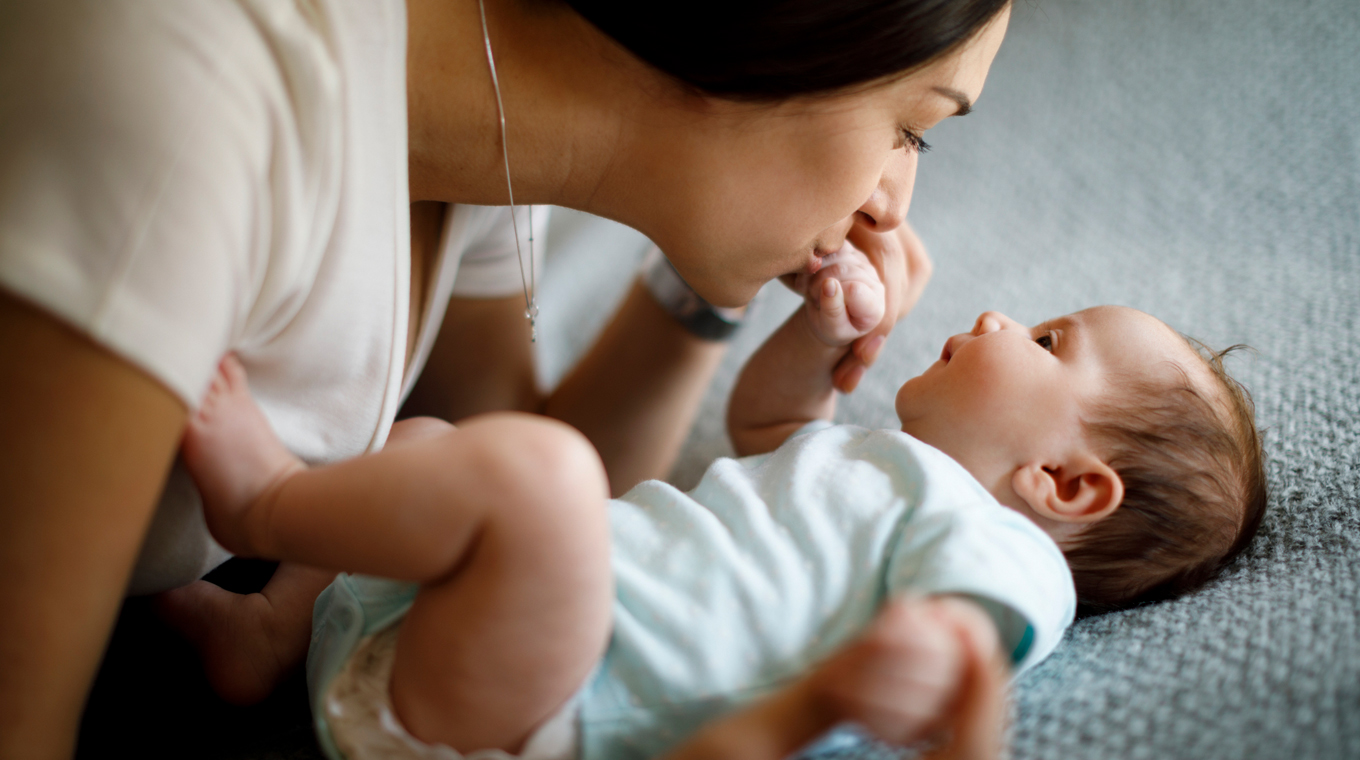
By the time your baby turns one month old, they should be able to move their eyes and head toward light sources and track you or an object across their midline. As they approach their second and third months, they’ll track objects vertically and circularly. They should be able to recognize the faces of those they see frequently. It’s around this time that your baby will spend time studying hands, feet, and your mouth (as you talk).
As the months go on, your baby will spend more time studying their own hands and feet. They’ll be very attentive to their own image in a reflection and can start to pick up and track objects and people across a room. Their eyes will start to move independently from their head, so they can track objects without moving their head. They’ll be obsessed with looking at toys and pictures.
Remember, the more you can talk to your baby to help them process what they’re looking at, the better they’ll translate the visual world in their mind. And along with that, they’ll develop stronger language skills, too.




